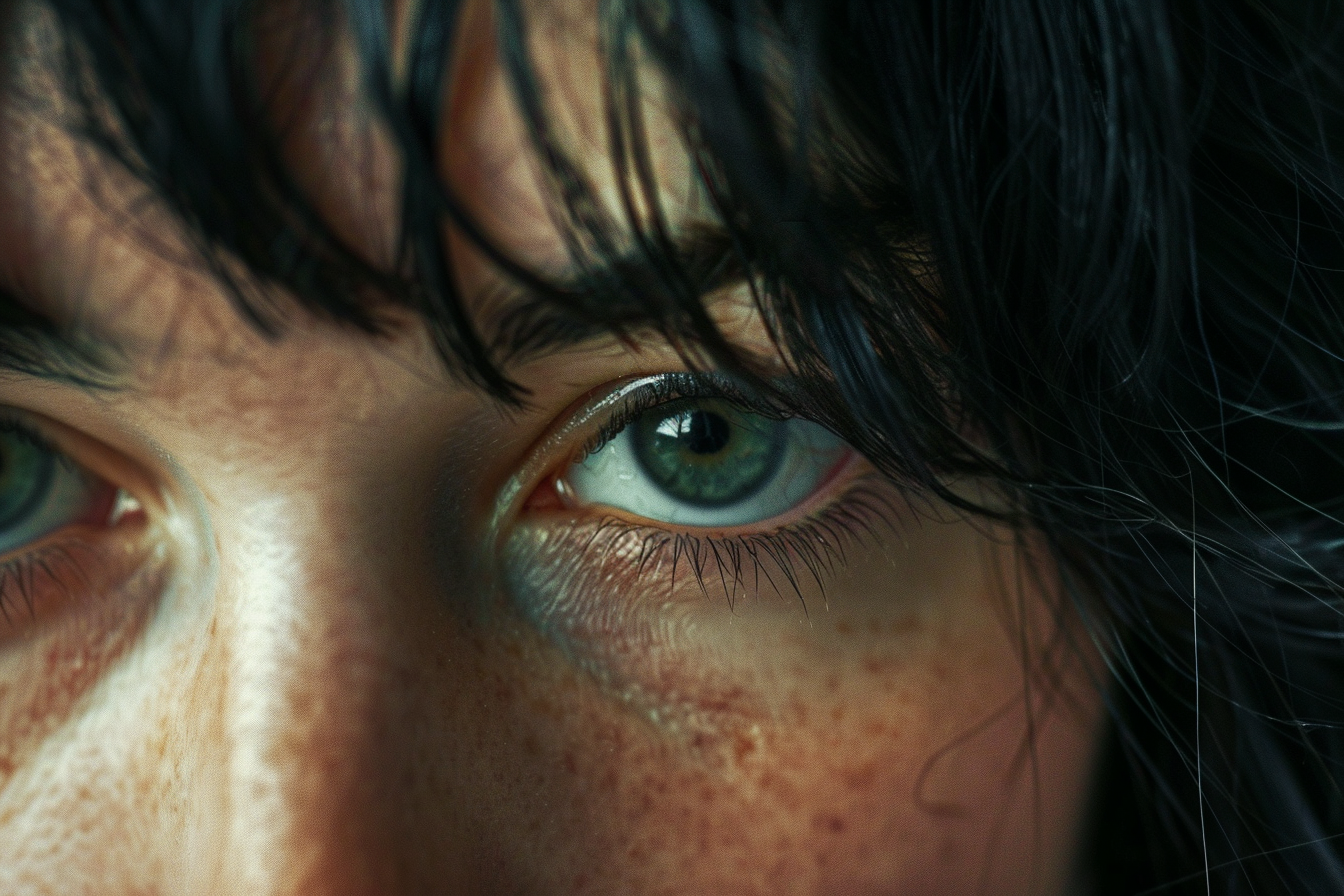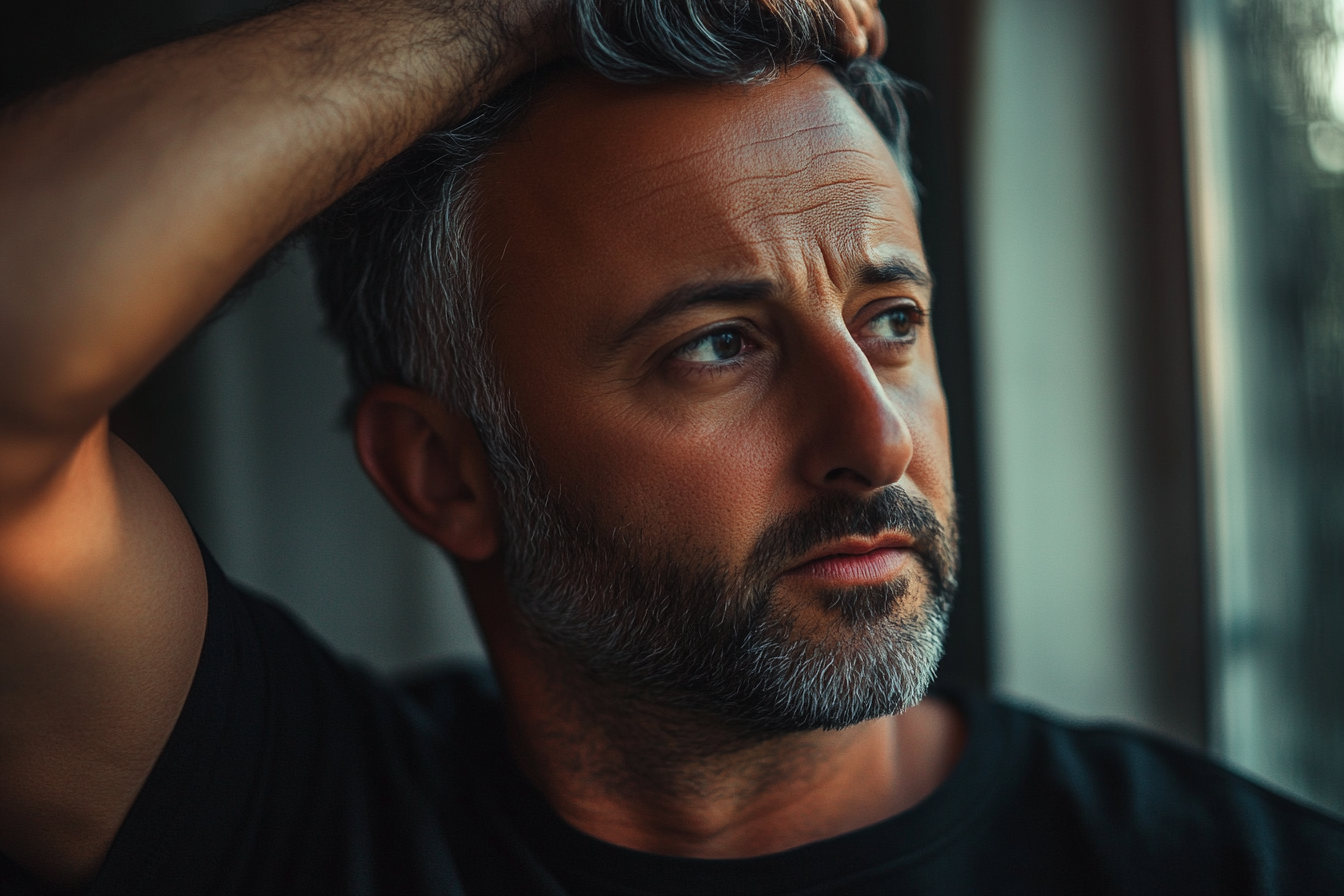The animal world is full of surprises, with some creatures being more eye-catching than others because of their strange looks or unusual nature.
When I first saw a picture of this weird “penis snake,” I thought it was a joke. But, to my surprise, it turned out to be a real animal. So, let’s dive into the story behind the viral image that has left thousands of people in shock.
Throughout history, anything shaped like a phallus has grabbed attention and sparked curiosity. A few years ago, images of a strange-looking creature started making the rounds online, leaving many people scratching their heads in disbelief.
With its unique appearance, this mysterious animal quickly earned nicknames like the “penis snake,” “blind snake,” or the “man-aconda.”
But no, it’s not what you think.
Even though it looks a lot like a snake, this creature is actually called *Atretochoana eiselti*. It’s not a snake at all, but an amphibian, more closely related to a salamander. It’s also the largest known lungless tetrapod, which means it breathes through its skin instead of lungs.
This rare animal lives in the waters of the Amazon in Brazil and was hard to find for a long time. It was first discovered by Sir Graham Hales during an expedition with Sir Brian Doll in the late 1800s.
However, it wasn’t officially described until 1968. After more research, scientists reclassified it in 1996, giving it its own unique genus, *Atretochoana*.
In 2011, this species was rediscovered in the Amazon region. It lives only in the Amazon River and its largest tributary, the Madeira River in Brazil. The “penis snake” has only been found in this area and nowhere else in the world.
The viral pictures that blew up the internet a few years ago actually came from 2011. That’s when a whole family of these phallic-shaped creatures was found at the bottom of the Madeira River in Brazil. They were discovered when the river was drained during work on a hydroelectric dam.
Julian Tupan, a biologist working with the Santo Antonio Energy company on the dam, explained that not much is known about these lungless, limbless amphibians.
“Out of the six we collected, one died, three were released back into the wild, and two were kept for study,” he told *Estadao*, according to the U.K.’s *The Sun*.
Tupan pointed out that these “snakes” aren’t dangerous and are unlikely to show any aggressive behavior.
“Even though they look like snakes, they’re not reptiles; they’re more closely related to salamanders and frogs. We think the animal breathes through its skin and probably eats small fish and worms, but that hasn’t been proven yet.
“The Amazon is full of surprises when it comes to reptiles and amphibians. There’s still a lot more to discover.”
The most popular photo, which Julian Tupan shared on Instagram, shows an adult female *A. eiselti* that’s just under 40 inches long.
Even though these creatures are fascinating, there’s still a lot we don’t know about them. One mystery that puzzles researchers is their diet. Scientists think these phallic-shaped animals might eat small fish, worms, and other aquatic invertebrates, but more research is needed to confirm this.
 Wikipedia Commons / Tobias von Anhalt
Wikipedia Commons / Tobias von AnhaltAnother mystery about these creatures is how they breathe, as scientists haven’t confirmed the method yet. When the six specimens were discovered in 2011, it made things even more puzzling. What’s especially interesting is where they were found— in cold, fast-flowing water with limited oxygen. Since warmer water holds less oxygen, their ability to live without lungs is even more remarkable.
Based on these findings, scientists believe this species might be widespread across the Brazilian Amazon and could even extend into Bolivia.
Nature constantly surprises us with its endless wonders. From the deepest oceans to the tallest mountains, the natural world is full of amazing things waiting to be discovered.
Share this incredible story on Facebook with your friends and family to spark their curiosity and get them talking about the wonders of nature!
Atendi acidentalmente a ligação de trabalho do meu marido — a voz do outro lado da linha expôs sua vida dupla

Quando Julianne atende o telefone do marido, a voz furiosa do outro lado da linha revela um segredo devastador: seu marido tem vivido uma vida dupla. Agora, ela terá que agir rápido para proteger a si mesma e ao filho das consequências do engano do marido.
Se você tivesse me perguntado naquela manhã se eu estava feliz, eu teria dito que sim. Talvez não de forma convincente, mas eu teria dito. Isso foi antes da ligação.

Uma silhueta de uma mulher | Fonte: Midjourney
Eu passava meus dias fazendo malabarismos com os papéis de esposa, mãe e voluntária da escola. Meu marido, Raymond, era o ganha-pão, um gerente de nível médio que chegava tarde em casa com muita frequência ultimamente, alegando estresse no trabalho.
Meu filho de oito anos, Ethan, era minha âncora e a razão pela qual eu continuava lutando, mesmo quando os olhos distantes de Raymond me atormentavam.
Mas eu não tinha tempo para me demorar. A vida continuou se movendo, e eu era bom em acompanhar.

Close up do rosto de uma mulher | Fonte: Midjourney
Eu já tinha visto Ethan indo para a escola no ônibus e estava me inclinando para dar um beijo de despedida em Ray quando ele se afastou de mim e pegou sua pasta.
“Tenho que me apressar. Hoje vai ser uma loucura e o Sr. Richards já deve estar me esperando”, ele murmurou enquanto saía correndo pela porta.
Eu nem percebi que ele tinha deixado o telefone na mesa da cozinha. Quando ele começou a tocar alguns minutos depois que ele saiu, eu atendi automaticamente, pensando que era meu.

Um celular | Fonte: Midjourney
“Raymond,” retrucou uma voz de mulher, cortante e furiosa. “Eu avisei você! Se você não se livrar dela, eu vou contar a todos que estou grávida do seu filho.”
Minha garganta fechou. Eu conhecia aquela voz… era Vera, minha irmã!
“Cansei de esperar, Ray. Este é seu último aviso. Diga a ela hoje, ou então!”
Antes que eu pudesse gritar ou exigir respostas, a linha caiu.

Uma mulher segurando um celular | Fonte: Midjourney
Fiquei ali, congelado, o telefone agarrado com tanta força na minha mão que meus dedos ficaram brancos. Vera sempre foi a tempestade para minha calma. Linda, imprudente e magnética, ela voava pela vida, trazendo caos e charme em igual medida.
E agora ela estava grávida do filho do meu marido. Eles estavam me traindo… por quanto tempo?
Um instinto estranho e distante entrou em ação, como se meu corpo estivesse operando no piloto automático. Meu polegar pairou sobre a tela antes de desbloquear o telefone de Raymond, a senha que eu o vi digitar mil vezes queimando em minha mente.

Uma mulher em pé na cozinha | Fonte: Midjourney
Meus dedos tremiam enquanto eu rolava pelas mensagens. E havia dezenas de textos, um fio de segredos que eu nunca deveria descobrir.
As palavras de Vera eram insistentes, suplicantes: Quando você vai contar a ela? Não posso continuar fazendo isso, Ray. Ela não tem noção.
Então as respostas cuidadosas e comedidas de Raymond: Só preciso de mais tempo. Quero fazer isso direito. Não podemos arriscar que ela descubra — isso vai estragar tudo.
A bile subiu na minha garganta enquanto eu juntava as peças. Eles tinham um plano, e ele era frio e calculado.

Uma mulher de coração partido | Fonte: Midjourney
Eles deixariam seus casamentos de tal forma que ninguém suspeitaria de seu caso. Vera estava pronta para deixar Jack, e Raymond estava ponderando como me deixar quieta e limpamente, garantindo que suas finanças permanecessem intocadas.
Ela não vai ganhar um centavo , dizia uma de suas mensagens. Vou me certificar disso .
Meus joelhos cederam e eu escorreguei para o chão da cozinha.

Uma mulher sentada no chão | Fonte: Midjourney
O telefone escorregou da minha mão e caiu ruidosamente nos ladrilhos, mas eu não me importei. Fiquei sentado ali, tremendo, o peso da traição pressionando-me como um cobertor sufocante.
A voz de Vera ecoou na minha cabeça, sobreposta às mentiras cuidadosas de Raymond. As duas pessoas em quem eu mais confiava no mundo conspiraram contra mim, trocando sussurros pelas minhas costas enquanto eu arrumava a mesa para jantares de família e dava um beijo de boa noite em Raymond.
A traição não apenas doeu; ela me consumiu, uma dor ardente e implacável que fez minha visão turvar.

Uma mulher emocional | Fonte: Midjourney
Pressionei minhas mãos no rosto, tentando bloquear tudo. Mas estava gravado na minha mente agora. Meu marido e minha irmã estavam tramando minha destruição.
Pela primeira vez na minha vida, me senti completamente desamparado. Mas eu não ia deixar que eles destruíssem minha vida. E eu não deixaria Ethan sofrer por seu egoísmo.
A raiva me alimentou, aguçando meu foco enquanto eu pegava minhas chaves e ia direto para o escritório do marido de Vera.

Um edifício de escritórios | Fonte: Pexels
Jack era o tipo de homem que conseguia transformar caos em ordem. Ele era tudo o que Vera não era: equilibrado, meticuloso e tão longe de ser impulsivo quanto uma pessoa poderia ser. Se alguém podia me ajudar, era Jack.
O prédio do escritório estava quieto. A secretária de Jack nem estava lá ainda; sua mesa estava vazia enquanto eu marchava por ela, meus tênis rangendo contra o piso polido.
Meu coração batia forte no peito quando cheguei à porta e bati com mais força do que pretendia.

Uma porta | Fonte: Pexels
“Entre”, Jack chamou, sua voz profunda e calma ecoando pela porta.
Entrei e ele levantou os olhos da mesa, franzindo a testa em confusão quando me viu.
“Julianne?” Ele se levantou, preocupação brilhando em seus olhos afiados e cinzentos. “O que há de errado? Aconteceu alguma coisa?”
Não me incomodei com gentilezas. Minhas mãos tremiam enquanto eu atravessava a sala e colocava o telefone de Raymond em sua mesa.

Um celular em cima de uma mesa | Fonte: Pexels
“Tenho algo importante para lhe contar, Jack. É sobre Vera e…” Eu vacilei, minha voz falhando. “Você precisa ver por si mesmo.”
Ele gesticulou para que eu me sentasse, mas fiquei de pé. Seu olhar não me deixou enquanto ele pegava o telefone e rolava pelas mensagens. A cada toque, seu rosto escurecia. Sua mandíbula se contraiu e seu aperto no telefone ficou rígido.
“Droga, Vera”, ele murmurou baixinho, sua calma aparente quebrando.

Um homem estressado | Fonte: Midjourney
Ele abaixou o telefone com mais força do que o necessário e apertou a ponta do nariz, exalando lentamente. Pensei que ele fosse explodir, mas, em vez disso, ele pegou um bloco de notas da mesa e o abriu. Seus movimentos eram precisos e deliberados.
“Precisamos de um plano”, ele disse, em tom seco e profissional.
Pisquei para ele, assustada com sua compostura. “Você não está… chocado? Machucado?”
“Não, estou furioso”, ele disse, olhando-me nos olhos.

Um homem furioso | Fonte: Midjourney
Sua voz estava calma, mas havia um tom perigoso por baixo dela. “Vera sempre foi volúvel, mas dessa vez ela foi longe demais.”
Ele bateu a caneta no bloco de notas, com o maxilar tenso. “Estou pedindo o divórcio. E vou ajudar você a fazer o mesmo. Com evidências como essa, eles não têm chance.”
Afundei na cadeira em frente a ele, minha fúria anterior substituída por algo mais firme.
“Jack”, eu disse, minha voz suave. “Obrigada.”

Uma mulher grata | Fonte: Midjourney
Seus lábios se apertaram em uma linha fina enquanto ele começou a rabiscar notas. “Não me agradeça ainda. Isso vai ser uma bagunça. Mas eles não nos deixaram escolha. Teremos que agir rápido, mesmo que isso signifique que eu tenha que puxar alguns pauzinhos. É isso que vamos fazer…”
Jack continuou tomando notas enquanto delineava seu plano. Minha determinação se solidificou enquanto eu assimilava tudo. Fiquei um pouco impressionado com a rapidez com que ele calculou cada passo, mas, principalmente, fiquei aliviado.
Eu não estava sozinho nessa luta. Jack e eu garantiríamos que Vera e Raymond pagassem por sua traição, e que nenhum de nós ficaria juntando os pedaços sozinho.

Um advogado em seu escritório | Fonte: Midjourney
Naquela noite, Vera e Jack se juntaram a Raymond e a mim para jantar. Eu tinha mandado uma mensagem de texto para Vera convidando-a assim que cheguei em casa. Então, liguei para o escritório de Ray para dizer que ele tinha deixado o telefone em casa.
“Meu Deus”, ele murmurou, com uma pitada de pânico na voz. “Só… desligue e coloque na gaveta da minha mesa de cabeceira, ok?”
“Claro, querida”, respondi. “A propósito, Jack e Vera vão se juntar a nós para jantar hoje à noite. Você poderia pegar uma garrafa de vinho no caminho para casa?”

Uma mulher falando ao celular | Fonte: Midjourney
Em seguida, organizei para que Ethan dormisse na casa de um amigo. Quando nos sentamos para jantar naquela noite, todas as peças do plano de Jack estavam no lugar.
Servi uma taça grande de vinho e a coloquei na frente de Vera.
“Oh, nada de vinho para mim, Jules.” Ela olhou fixamente para Raymond. “Eu tenho me sentido um pouco indisposta ultimamente.”
“Acho que faz sentido”, respondi. “O primeiro trimestre é difícil e mulheres grávidas não devem beber, certo?”

Taças de vinho sobre uma mesa | Fonte: Pexels
O garfo de Vera bateu no prato e a mão de Raymond apertou a borda da mesa.
“Oh, não fique surpreso”, eu disse. “Eu sei sobre o caso, o bebê e seus pequenos planos de me deixar sem nada.”
Jack, que estava esperando sua deixa, pegou duas pastas e se levantou do assento.
“Esses são os seus papéis de divórcio”, ele disse, batendo uma pasta na frente de Vera antes de colocar a outra na frente de Ray. “E esses são seus.”

Documentos de divórcio | Fonte: Pexels
Raymond se virou para mim, o pânico inundando seus olhos. “Julianne, por favor…”
“Você não pode falar!” Eu rebati, minha voz tremendo de raiva. “Você destruiu tudo, e para quê? Ela ?”
Raymond olhou para Vera, que agora chorava abertamente, e depois de volta para mim. Ele não respondeu. Apenas encarou a mesa, derrotado.

Um homem emocional | Fonte: Midjourney
Nas semanas que se seguiram, Jack e eu trabalhamos como uma equipe. Ele foi implacável no tribunal, me ajudando a garantir um acordo que garantiu que Ethan e eu ficaríamos bem.
Raymond perdeu seus bens, sua reputação e qualquer resquício de decência que ele achava que ainda tinha. Jack entrou com pedido de custódia total dos filhos, e Vera ficou lutando.
O escândalo devastou nossa pequena cidade. Todos sabiam o que tinha acontecido, e nem Raymond nem Vera conseguiam entrar no mercado sem que sussurros os seguissem.

Pessoas em um supermercado | Fonte: Pexels
Uma noite, enquanto observava Ethan brincar no quintal, senti uma estranha sensação de paz. Minha vida não era o que eu pensava que era. Era confusa, complicada e dolorosa. Mas era minha, e eu estava livre para moldá-la em algo novo.
Aqui vai outra história: Mia fica emocionada quando seu filho rebelde, Jack, retorna de um fim de semana na casa da avó como um modelo de disciplina, mas sua estranha transformação a deixa inquieta. Determinada a descobrir o que aconteceu, as perguntas de Mia a levam a uma revelação perigosa. Clique aqui para continuar lendo.
Este trabalho é inspirado em eventos e pessoas reais, mas foi ficcionalizado para fins criativos. Nomes, personagens e detalhes foram alterados para proteger a privacidade e melhorar a narrativa. Qualquer semelhança com pessoas reais, vivas ou mortas, ou eventos reais é mera coincidência e não intencional do autor.
O autor e a editora não fazem nenhuma reivindicação quanto à precisão dos eventos ou à representação dos personagens e não são responsáveis por nenhuma interpretação errônea. Esta história é fornecida “como está”, e quaisquer opiniões expressas são as dos personagens e não refletem as opiniões do autor ou da editora.



Leave a Reply